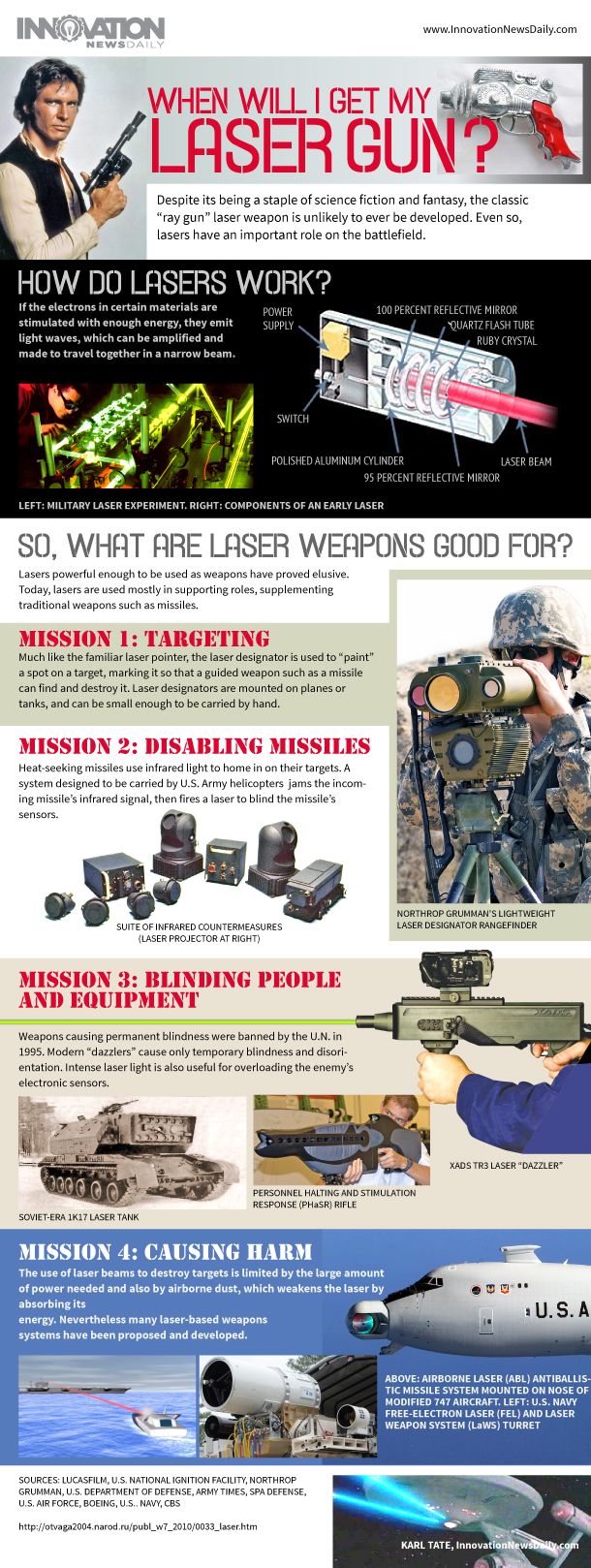How Do Laser Weapons Work? (Infographic)

Despite being a staple of science fiction and fantasy, the classic “ray gun” laser weapon is unlikely to ever be developed. Even so, lasers have an important role on the battlefield.
If the electrons in certain materials are stimulated with enough energy, they emit light waves, which can be amplified and made to travel together in a narrow beam. The beam is called a laser.
Lasers powerful enough to be used as weapons have proved elusive. Today, lasers are used mostly in supporting roles, supplementing traditional weapons such as missiles.
Much like the familiar laser pointer, the laser designator is used to “paint” a spot on a target, marking it so that a guided weapon such as a missile can find and destroy it. Laser designators are mounted on planes or tanks, and can be small enough to be carried by hand.
Heat-seeking missiles use infrared light to home in on their targets. A system designed to be carried by U.S. Army helicopters jams the incoming missile’s infrared signal, then fires a laser to blind the missile’s sensors.
Weapons causing permanent blindness were banned by the U.N. in 1995. Modern “dazzlers” cause only temporary blindness and disorientation. Intense laser light is also useful for overloading the enemy’s electronic sensors.
The use of laser beams to destroy targets is limited by the large amount of power needed and also by airborne dust, which weakens the laser by absorbing its energy. Nevertheless many laser-based weapons systems have been proposed and developed.
Sign up for the Live Science daily newsletter now
Get the world’s most fascinating discoveries delivered straight to your inbox.



